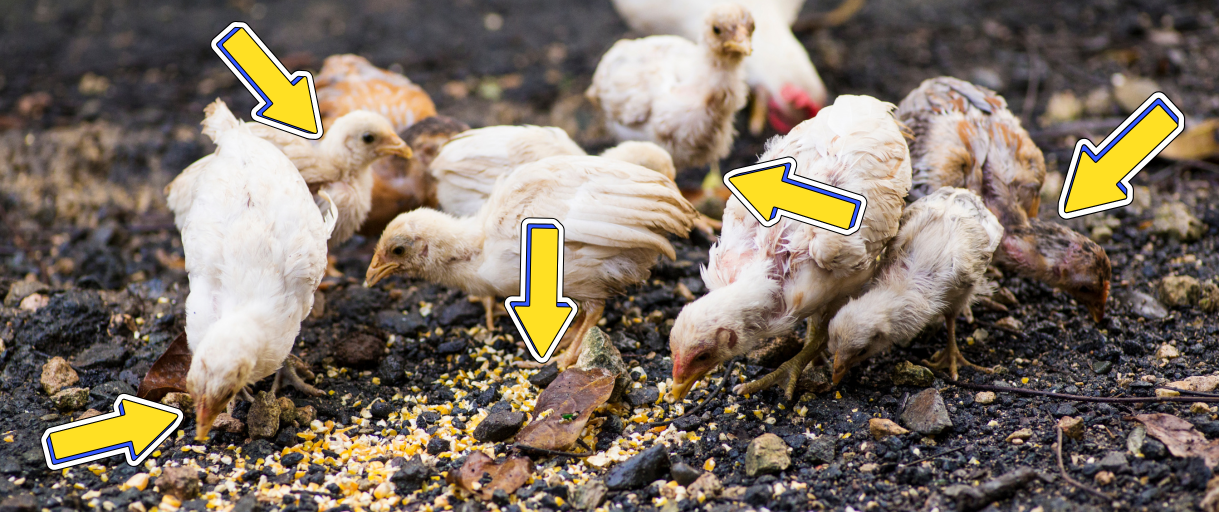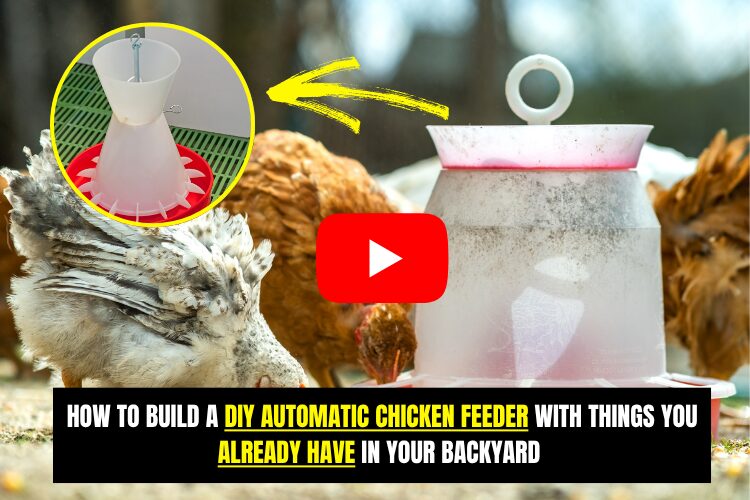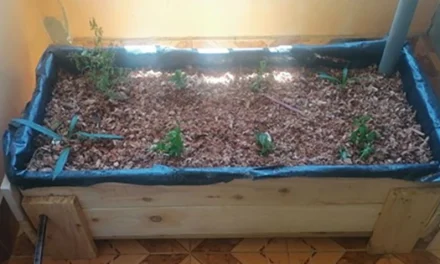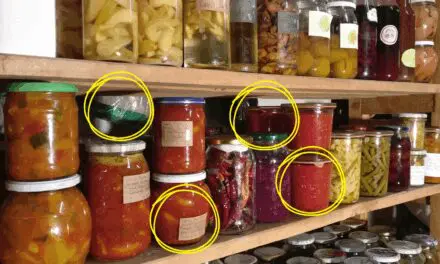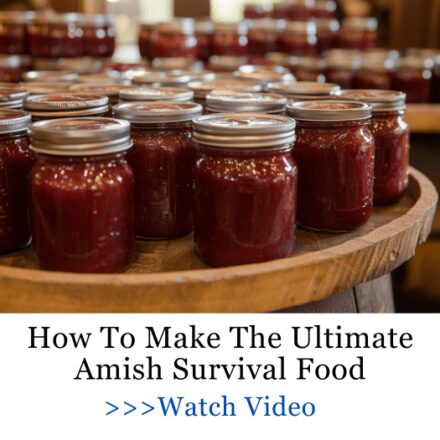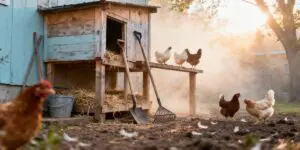You think your chickens are safe. You built the coop yourself, added straw, maybe even a solar door. But what if that structure—your pride and joy—is quietly killing them? It doesn’t take much. One leak, one loose panel, one missed sign of disease. That’s how entire flocks disappear overnight. And the worst part? You won’t see it coming—until the feathers start falling.
Anyone who raises chickens knows that happy hens are healthy; lay eggs on a regular basis and live long lives on their way to the frying pan. But imagine the devastation to walk out one morning and find the entire flock dead or wonder why they seem to be slowly dropping one at a time.
It’s easy to assume that things like bird flu may be to blame but long before birds got the flu there were factors that killed chickens because of some basic mistakes. Some are related to the design of the chicken coop but there are also basic decisions that need to be carefully considered. Here are many of the chicken coop fail factors to think about before and during your chicken raising endeavors.
Now, we all know the common chicken coop mistakes we should avoid, like overcrowding, poor ventilation or forgetting to harvest the eggs. But did you know there are many other silent killers that we often overlook and that might put your chickens’ health in danger? Here are some of them:
1. No Dust Bath Area
This one easily flies under the radar, but a coop or run without a dust bath zone can become a breeding ground for lice, mites, and other parasites.
You won’t always see it right away. Maybe your hens are just a little restless, or they’re preening more than usual. But soon, feathers start falling out, and bald patches show up around the vent. Weight drops, egg production stalls. And by the time you realize what’s happening, your entire flock could be crawling with blood-sucking parasites.
These pests thrive in warm, moist environments, exactly what you create when chickens are denied their natural grooming method. Chickens instinctively use dust, ash, and dry dirt to coat their feathers and skin. This deters mites and lice and keeps their plumage clean and dry. In short, it’s their version of a shower and a pesticide treatment rolled into one. But without access to dry dust, they have no defense.
And here’s the part most people overlook: even if your run is technically outdoors, if it’s muddy, damp, or heavily compacted, it’s still useless. The parasites don’t care how nice your coop looks, they only care that your chickens are vulnerable. And they’ll spread from bird to bird with alarming speed, especially in confined quarters.
Every keeper should create a designated, protected dust bathing area. A covered corner filled with fine dirt, wood ash, sand, and a handful of food-grade diatomaceous earth can make all the difference. It must stay dry. Replace it if it gets soggy, clumps, or crusts over.
2. Moisture and Mold
If there’s one thing that turns a seemingly cozy chicken coop into a death trap faster than you can blink, it’s unchecked moisture. It might not look like much. A little condensation on the walls, damp straw under the roosts, or a musty smell creeping in. But behind those subtle signs lies a growing threat that can quietly decimate your flock.
When humidity levels spike, especially in poorly ventilated coops, you’re setting the perfect stage for mold, bacteria, and deadly respiratory infections. Mold spores thrive in damp wood and soiled bedding, spreading through the air your chickens breathe every second. If you’re not careful, your coop walls, ceiling, and nesting boxes can become breeding grounds for black mold and mildew in a matter of days.
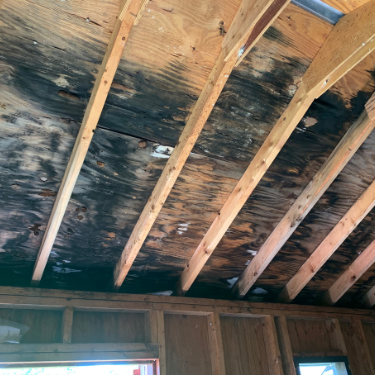
And the danger doesn’t stop there.
High humidity in winter is downright lethal. You may think your flock is safe from the cold inside the coop, but the real threat is actually in the air. When temperatures drop and moisture hangs heavy, frostbite becomes a serious risk. Chickens lose toes. Combs turn black. Wattles swell up like balloons, then die and fall off. And it happens fast, sometimes even overnight.
Many chicken keepers don’t realize how bad it really is until it’s too late. A damp coop may look normal on the surface. Meanwhile, ammonia levels rise, mold multiplies, and your birds struggle to breathe, laying fewer eggs, becoming lethargic, and slowly declining in health.
That’s why good ventilation isn’t optional. It’s a survival tool. Aim to keep humidity levels between 50% and 70% year-round. Install vents high enough to avoid drafts at roost level, and always ensure the bedding stays dry to the touch. If your windows are fogging up or your nose wrinkles when you open the coop door, your flock is already at risk.
Because while a dry coop might not seem like a big deal…a wet one can turn deadly without warning.
➡️ How to Take Care of Your Livestock When They Are Sick
3. Using Deep Nesting Boxes as a Roosting Spot
This one is also easy to overlook, but if your boxes are too dark, too deep, or, worst of all, positioned higher than the roost, you could be inviting disaster into your coop without realizing it.
Chickens will always seek the highest, safest place to roost at night. If that ends up being the nesting box, you’re not just dealing with a few misplaced feathers. You’re looking at a health hazard waiting to unfold.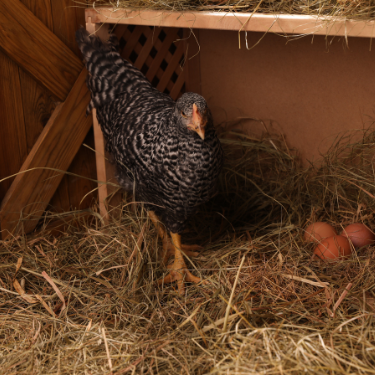
Sleeping hens poop a lot. So it’s just a matter of time before that warm, private laying spot turns into a filthy cesspool, and it doesn’t take long for eggs to start getting soiled with feces and bacteria. This isn’t just gross. It’s actually dangerous. Dirty eggs can harbor E. coli, salmonella, and other bacteria that thrive in warm, moist bedding. If one egg cracks in that mess, the contamination will spread like wildfire.
And if you collect your eggs without noticing this, you might be bringing those pathogens straight into your dinner table.
Even worse, once a hen starts sleeping in the box, others will follow. Chickens are creatures of habit, and breaking this one is a nightmare. You’ll find yourself cleaning the boxes every morning, tossing out spoiled eggs, and wondering why your hens keep laying less. Stress and sickness don’t take long to follow.
Prevention is simple but non-negotiable:
- Nesting boxes should always be lower than your roosts.
- Make them just large enough for a hen to lay — not lounge.
- Block access at night if you’re dealing with a stubborn sleeper.
4. Bedding Choices
Bedding isn’t just a cozy cushion for your chickens, it’s actually the frontline defense between your flock and a toxic, disease-ridden environment. Spread across the coop floor, inside nest boxes, and especially under roosts where your chickens spend their nights, bedding’s main job is to trap droppings and keep the coop clean. But if you get it wrong, you could be unknowingly creating a death trap.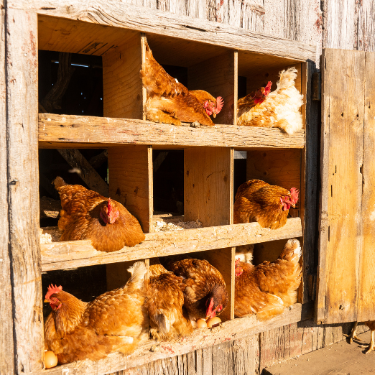
Why does it matter so much?
Because droppings left to accumulate without proper bedding will build up ammonia, a silent killer. That sharp, choking gas burns your chickens’ sensitive respiratory systems and damages their lungs over time, leaving them vulnerable to infections and respiratory diseases.
The stakes are even higher when multiple risk factors collide: ammonia, mold, bacteria, and moisture all amplify each other’s damage, turning your coop into a deadly environment where chickens can literally choke, get sick, and die.
Bedding should be spread across the floor of the coop to a depth of 2 to 6 inches, in nest boxes and particularly under roosts where chickens sleep.
Hemp and straw top the list for good airflow, moisture control, and ease of cleaning. Sand, grass clippings, and leaves can also work well if maintained properly.
But avoid dangerous traps like cedar shavings, whose strong aromatic oils can irritate and harm your chickens’ respiratory systems. Hay molds far too easily and encourages the deadly spores you want nowhere near your flock.
5. Leaving Feed or Scraps Inside Overnight
Leaving leftover chicken feed or kitchen scraps inside the coop or run overnight is basically an open invitation to a parade of dangerous predators and pests that can turn your peaceful flock’s home into a nightmare.
Yes, mice and rats are the obvious culprits. But what’s far more terrifying is that this leftover food lures larger, more dangerous predators: raccoons, opossums, snakes, even coyotes or foxes in some areas. And once a smart predator like this figures out food is available, it will keep coming back until it finds your chickens.
To keep your flock safe, you must remove every trace of feed and scraps before nightfall. Consider investing in hanging feeders or treadle feeders that only open when your chickens are actually eating. This reduces waste, keeps feed fresh, and most importantly, denies predators an easy buffet.
And whatever you do, never compost old food right near the coop. Compost piles are like neon signs flashing “dinner here” for every unwanted visitor in the neighborhood.
You built a coop to protect your chickens. But what if it’s slowly turning into their coffin?
Moldy feed. Night-time predators. Disease crawling through damp corners. Most people never notice until it’s too late. But there’s one fix that can stop the spiral before it begins—a survival-grade DIY feeder that guards your flock, keeps feed clean, and keeps you out of crisis mode.
👉 Get the guide here before a raccoon, rat, or rainstorm decides your flock’s fate.
6. Forgetting to Check for Drafts at Roosting Level
We all know it: ventilation is essential for any coop, but here’s the catch most people miss: it’s not just if air moves, it’s where it moves that can make the difference between healthy chickens and a devastating winter loss.
If a cold draft blows directly across your chickens while they’re roosting, it’s like sticking them in a chilly wind tunnel all night long. Chickens’ combs, wattles, feet, and legs are especially vulnerable to frostbite when exposed to even moderate drafts during freezing weather. What starts as subtle frost nip can quickly escalate into painful, gangrenous tissue damage, and in the worst cases, death.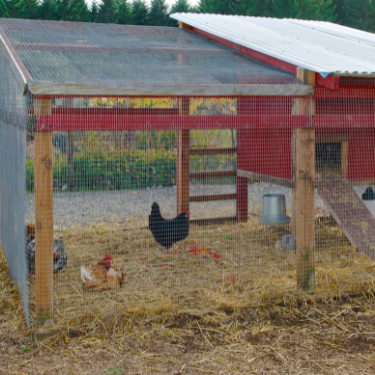
Test it yourself: sit at roosting height during a breezy day and see if you feel airflow. If yes, redirect it higher or away with baffles or adjustments to vents.
While some hardy breeds like Buff Orpingtons can tolerate these stressors better, no chicken is invincible. Stress from constant chilling weakens them over time, increasing the risk of overcrowding conflicts, pecking injuries, and illness.
Your chickens won’t survive the next brutal season if you’re using guesswork.
I found a field-tested guide that I received for free as a bonus, called How to Become Self-Sufficient on 4 Acres—and it gave me more than tips. It gave me survival tools:
-
How to pick breeds that won’t drop dead in your climate
-
Reinforced coop upgrades that keep predators out
-
Medicinal remedies to fight off infection when vets are hours—or days—away
👉 Don’t let ignorance cost you your flock. Get the guide now and stay 10 steps ahead of the next disaster.
7. Coop Location Creates a ‘Predator Funnel’
It’s tempting to tuck your coop against a fence, a dense brush line, or a wall to save space or block wind, but what you might not realize is that you could be turning your coop into a predator’s perfect hunting ground. Foxes, raccoons, stray dogs, and other nighttime prowlers love using these natural barriers as funnels to corner your chickens with nowhere to run.
Picture this: a cunning fox chases your flock toward that fence line you thought was a safe boundary, trapping your birds in a claustrophobic corner. Once trapped, even the strongest chicken can’t outrun a determined predator. What looks like a cozy nook can quickly become a deadly bottleneck.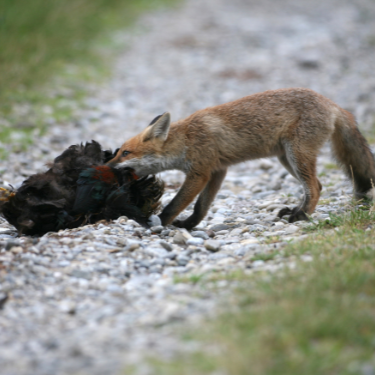
The list of predators is long and terrifying: coyotes, wolves, raccoons, feral dogs, and in some regions, bears and birds of prey like hawks and falcons. While a bear breaking into a standard coop is rare but catastrophic, more common predators find their way in through tiny gaps and overlooked weak spots.
If your coop doesn’t have a secure floor or runs directly on soil, predators will dig beneath the walls in no time. A single dog or coyote can squeeze under an unprotected edge and turn your carefully raised flock into prey before you even hear a noise.
Prevent this by burying metal sheeting, hardware cloth, or bricks at least 12 inches deep around the coop perimeter. Don’t rely on fencing alone—diggers are experts at exploiting the smallest opening.
And guess what, it’s not just about those larger predators. Mice and rodents love chicken coops. They have easy access and there’s always plenty of food. The problem comes from the mouse droppings. They’re known to introduce Hunta virus and if your flock gets infected, they’re gone. Figure out how to mouse proof your chicken coop.
It’s not easy and maybe inevitable, but if you notice mice in the run or the coop you can set mousetraps in enclosed boxes that the mice can enter but the chicken can’t peck.
You won’t always hear the attack. But your chickens will feel it—until it’s too late.
I used to think fences were enough. Then I walked out one morning and found nothing but feathers. Predators don’t quit. You need a defense system that works while you sleep.
These DIY automatic predator traps are silent, safe for your flock, and lethal to intruders. Raccoons, opossums, anything that slips past your fence—it catches them in the act, resets itself, and waits for the next one.
👉 Learn how to build one here before something gets in tonight.
8. Unbalanced Flooring and Slippery Surfaces
Floors that are too smooth (like plastic or metal) can cause leg injuries, especially for heavy breeds. Chickens jumping down from roosts or racing for food can slip and tear tendons or get bumblefoot.
Add textured mats, straw, or coarse bedding. If you’re using wood, give it a rough sanding and avoid overly slick coatings. Make sure roosts aren’t too high above hard floors. 18–24 inches is ideal.
9. Toxic Substances
Chickens will peck at and eat just about anything. That includes chemically treated wood, moldy feed and the most poisonous plants and berries like Yew and nightshade. Keep an eye on what they may come across and clear it out. Good or bad, they’ll probably eat it.
10. Lighting Problems
Believe it or not, lighting can mess with your flock’s health and egg production. Chickens rely on consistent light patterns to regulate their laying cycles and sleep.
A coop that’s too dark or poorly lit can confuse their biological rhythms. On the other hand, bright artificial light 24/7 can stress them out, and stressed chickens are more likely to get sick or stop laying altogether.
Natural light is best. If you supplement in the winter, stick to low-intensity bulbs and mimic sunrise/sunset patterns (about 14 hours of light per day is ideal). Use timers so they can rest properly at night.
Be Vigilant
Preppers are always vigilant and it’s worth spreading that mindset to something as basic as the health of your chicken flock. Keep the coop and the run clean by removing bedding and even washing down areas with a hose. Let the coop completely dry and then add fresh bedding. Failure to keep track of some of these common mistakes and events can cost you the flock. That’s never good. Especially if you really need the eggs.
I Fed Stinging Nettles to My Chickens, and This Happened
The Only Plant That Will Make Your Poultry Lay More Eggs Than Usual (Video)
Automatic Chicken Feeder That Needs No Electricity: How Do You Make It?
Can You Catch Bird Flu From Chickens? What No One’s Telling You
These Are The Most Dangerous Chicken Breeds. Do You Have Any Of Them?

